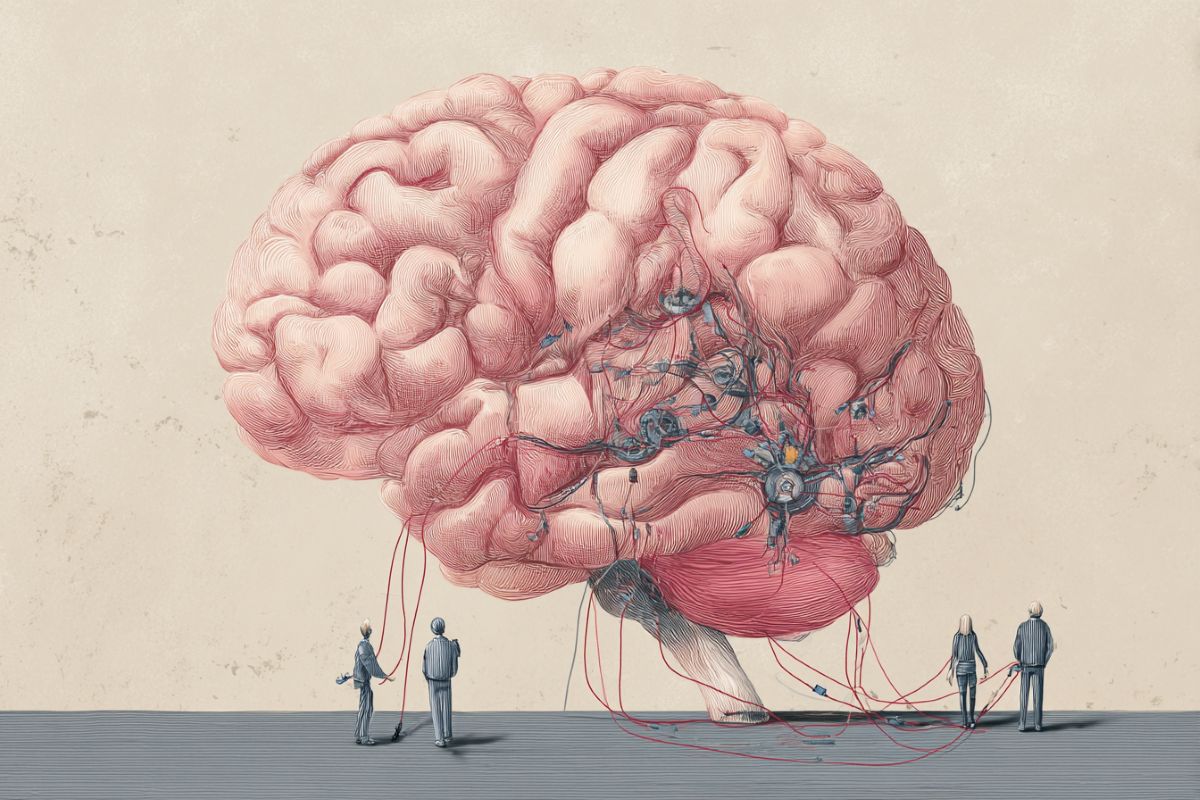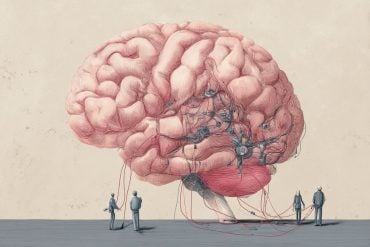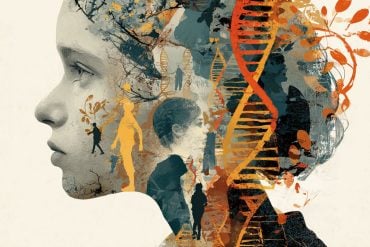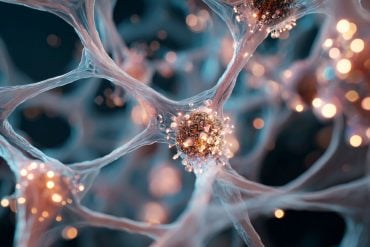Summary: A new clinical trial shows that deep brain stimulation (DBS) improved symptoms in half of adults with treatment-resistant depression, with one-third reaching remission. Researchers found that theta-frequency brain activity in the bed nucleus of the stria terminalis (BNST) predicted how well each patient responded.
Lower pre-surgery theta activity and stronger BNST–prefrontal cortex coherence were linked to better outcomes. These findings may enable personalized DBS treatments and real-time, closed-loop stimulation in the future.
Key Facts:
- Predictive Biomarker: Lower BNST theta activity before surgery predicted greater improvement in depression and anxiety.
- Response Rate: 13 of 26 patients improved, and 9 achieved near-complete remission.
- Closed-Loop Potential: DBS reduced BNST theta in parallel with symptom relief, supporting future adaptive stimulation systems.
Source: University of Cambridge
Deep brain stimulation – implants in the brain that act as a kind of ‘pacemaker’ – has led to clinical improvements in half of the participants with treatment-resistant severe depression in an ‘open label’ trial.
Significantly, the study, led by researchers in the UK and China, identified a telltale signature of brain activity that predicted how well individual patients responded to the treatment. This could be used in future to target the treatment at those patients most likely to benefit.
Major depressive disorder is one of the most common disabling mental health problems worldwide. While antidepressants and cognitive therapies help many patients, there are high rates of treatment resistance. Treatments will fail for between three and five in 10 patients with depression.
Over the past few decades, a technique known as deep brain stimulation (DBS) has begun to be used to treat a range of conditions, most successfully for patients with Parkinson’s disease. The technique involves the insertion of thin electrodes deep into the brain that transmit mild electrical stimulation to correct errant brain activity.
In a study published today in Nature Communications, researchers trialled DBS in 26 patients recruited from Ruijin Hospital, Shanghai Jiaotong University School of Medicine in China, all of whom had treatment-resistant depression. The trial was open label, which means that both researchers and the patients were aware that DBS was being administered.
The team applied stimulation to two areas of the brain. The first was the bed nucleus of the stria terminalis (BNST), an extension of the amygdala that is involved in regulating stress, anxiety, fear and social behaviours, particularly in response to long-term stresses and fears. The second area was the nucleus accumbens, which is involved in how the brain processes rewards, and is a key area for motivation, pleasure, and reinforcement.
Half of the patients (13 out of 26) saw significant improvements, as measured on different scores for depression- and anxiety-related symptoms along with clinically relevant quality of life and disability scores. Nine of these patients (35% of the study cohort) achieved remission, meaning a near-complete elimination of their symptoms.
The researchers recorded brain electrical activity from the DBS electrodes in the BNST and scalp EEG (electroencephalogram) and found brain activity at a specific frequency range (4–8 Hz), known as theta activity, to be clinically important.
Theta activity in the BNST correlated with how severe a patient’s depression was and how anxious they felt on a daily basis – those patients with higher levels of theta activity experienced worse symptoms.
People with lower levels of theta activity in this brain region before surgery tended to improve more and report greater improvements in quality of life at three, six and 12 months, though only in relation to depression and anxiety, not to loss of pleasure (known as anhedonia).
Similarly, those patients with greater ‘coherence’ between the BNST and the prefrontal cortex in theta frequences – in other words, those patients where these two regions were most closely synchronised – were also likely to have better outcomes. The prefrontal cortex is involved in emotional regulation, and greater coherence implies better communication between these two regions.
Professor Valerie Voon from the Department of Psychiatry at the University of Cambridge and Fudan University, China, said: “Deep brain stimulation shows real promise at tackling treatment-resistant depression, which can have a huge impact on people’s lives. But our study hasn’t just highlighted this promise, it’s given us a potential and much-needed objective marker to say which patients will respond best.”
Dr Linbin Wang from the Department of Psychiatry at the University of Cambridge added: “We found that brain activity at a particular frequency – theta brainwaves – could tell us which patients would have the best response to DBS treatment in the BNST brain region. This could help us personalise treatment for individual patients in future.”
During the trial, DBS reduced BNST theta activity, and this reduction matched improvements in symptoms of depression and anxiety. This opens up the possibility of using a ‘closed-loop system’ that uses real-time feedback to adjust the electrical stimulation, say the researchers.
Professor Valerie Voon added: “Because theta activity tracks anxiety states in real time, it means that if activity is high, we can say ‘OK, this person is an anxious state, we need to turn up stimulation’. Likewise, if theta activity is low, we can turn down the stimulation.”
Professor Bomin Sun, the neurosurgeon who led the study at Shanghai Jiao Tong University School of Medicine, said “This is the largest study to show that deep brain stimulation of the BNST and nucleus accumbens can treat depression. Depression is a major public health problem in China and globally. This study not only tells us how the brain is impaired in depression, it also highlights potential of DBS for depression.”
The team also found psychological measures that indicated how well a patient would respond to treatment. Participants were shown a series of images, some pleasant (such as puppies), some neutral (such as furniture), and some negative (such as accidents). Patients with the strongest reaction to the negative images were least likely to see benefits from DBS.
The research was funded by the National Natural Science Foundation of China, the Science and Technology Commission of Shanghai Municipality. Professor Voon and her team were also funded by the UK Medical Research Council.
Alongside this study, the researchers carried out a double-blinded, randomised controlled trial of DBS for treatment-resistant depression. Such trials are considered the ‘gold standard’, as neither researchers nor patients are aware which treatment is being administered, removing the possibility of a placebo effect. The results of this trial will be published shortly.
Key Questions Answered:
A: Lower theta-frequency activity in the BNST before treatment strongly predicts better responses.
A: Half improved significantly, and one-third reached remission of core symptoms.
A: It enables personalized DBS settings and supports development of real-time closed-loop stimulation.
Editors Notes
- This article was written by a Neuroscience News editor.
- Journal paper reviewed in full.
- Additional context added by our staff.
About this neurotech and depression research news
Author: Craig Brierley
Source: University of Cambridge
Contact: Craig Brierley – University of Cambridge
Image: The image is credited to Neuroscience News
Original Research: Open access.
“Prefrontal–Bed Nucleus of the Stria Terminalis Physiological and Neuropsychological Biomarkers Predict Therapeutic Outcomes in Depression” by Valerie Voon et al. Nature Communications
Abstract
Prefrontal–Bed Nucleus of the Stria Terminalis Physiological and Neuropsychological Biomarkers Predict Therapeutic Outcomes in Depression
Therapeutic options for refractory depression are urgently needed.
We conducted a deep brain stimulation (DBS) randomized controlled trial of the bed nucleus of the stria terminalis (BNST), an extended amygdala structure, and nucleus accumbens (NAc) in 26 refractory depression patients to assess treatment efficacy and predictors of response.
BNST-NAc DBS had a 50% depression response rate and 35% remission rate in the open-label phase.
We identified an objective intracranial physiological biomarker using acute and chronic intracranial recordings, machine learning, and an integrated framework combining electrophysiology, neuroimaging, and behavior: lower BNST theta and prefrontal-BNST coherence with top-down connectivity predicted better depression outcomes and quality-of-life after chronic stimulation at 3, 6 and 12 months, confirmed across eyes -open and -closed states and machine learning.
We identified a physiology-guided connectivity network involving dorsal anterior cingulate and lateral inferior frontal cortex tracts.
These biomarkers, linked to negative emotional bias and anxiety, highlight the efficacy of BNST-NAc DBS for refractory depression and has potential broader clinical implications. ClinicalTrials.gov registration: NCT04530942.







